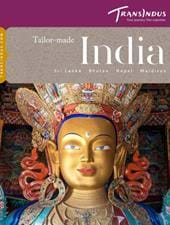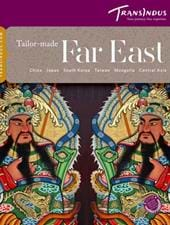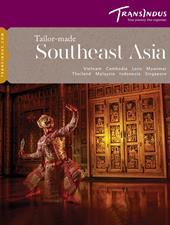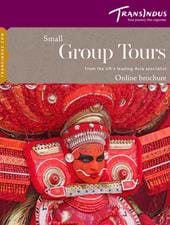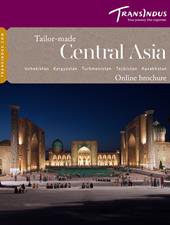Time zone: UTC +7 hours
Flying time: 13 hours
Currency:Dong
Capital: Hanoi
Currency
Local currency in Vietnam is the Vietnamese Dong. The Dong is a regulated currency and cannot be obtained outside Vietnam. Bills are available in denominations of 500, 1000, 2000, 5000, 10000, 20000, 50000, 100000, 200000 and 500000 dong. In 2003, coins were also introduced in denominations of 200, 500, 1000, 2000 and 5000 dong.
Cash withdrawals on credit/debit cards from dispensing machines are readily available in the major tourist towns of the country but should not be relied upon, particularly if visiting more remote areas.
Travellers Cheques are best carried in US dollars and can be exchanged in most major tourist towns. Similarly credit cards can be used in major hotels, tourist shops and bigger restaurants. Do not rely on either if travelling to more remote and rural areas.
US dollar is a widely accepted currency in Vietnam and most goods and services can be paid for in Dongs or Dollars. It is good to carry a combination of both at all times. It is also preferable if the dollar bills are in good condition as many businesses may refuse to accept worn out notes.
If travelling on to Laos or Cambodia, please ensure you have the appropriate amounts in US dollars for visa on arrival in these countries. Lao visa costs $35 per person while Cambodia visa costs $20 per person. Acquiring US dollars in Vietnam can be tricky, it is best to carry adequate cash from the UK itself.
Food and Healthcare
Vietnam is a tropical destination, so be sure to drink plenty of fluid to prevent heatstroke and dehydration. Avoid drinking tap water and taking ice in drinks. Stick to bottled water (or boiled/UV treated water available at the hotel) and ensure that the seal is opened by you/in your presence. Aerated waters (bottled soft drinks) are fine.
Food sits at the very heart of Vietnamese culture and has an important place in every Vietnamese’ social life and milestones. Preparing food and eating together remains the focus of family life. The cuisine in Vietnam is world famous: its unique flavour is a combination of lots of aromatic herbs, fresh seafood, plenty of vegetables and their surprisingly palatable fermented fish sauce. Different regions have different styles with the central style of Hue and Hoi An being popular. Pho – a bowl of white noodles served in clear beef stock is the national dish of Vietnam and is often had 3 times a day by many Vietnamese! Other popular dishes include mi quang (wheat noodles with herbs, pork, and shrimp), banh canh cua (crab soup with thick rice noodles) and bun bo Hue (beef soup with herbs and noodles).
You will find delectable Vietnamese food even in modest restaurants and these to have a good standard of hygiene. Coffee, baguettes, and pastries were originally introduced by the French colonials, but all three have been localized and remain popular contemporary aspects of Vietnamese cuisine. Vietnamese coffee, a wonderfully aromatic espresso often served with sweet condensed milk, is not for the faint-hearted!
For the occasional nostalgia of home cuisine, you will find Western alternatives available at most higher standard restaurants and hotels.
Vietnamese beers such as Tiger brand are widely available, although you may find them quite different to their European relatives. The daily brewed bia hoi or draft beer served at most local bars can be tried but do note that these are not necessarily made under stringent sanitary conditions. International wine, if available, is quite costly but there are some good local wines, most produced at the vineyards around Dalat. Check the price before ordering. Other liquors and ‘rice wines’ are also available, though not all meet western consumer standards. If in doubt, we recommend that you stick to the more expensive imported brands. You can import 1.5 litres of liquor at 22% and above, and 2 litres of liquor below this amount, per person, into Vietnam.
Eat moderately for the first few days. Allow your system to get used to the changes. Be cautious with local milk products like cheese, cream and ice-cream. It is also advisable to eat only cooked vegetables and avoid green salads.
We recommend you carry with you a small supply of basic health care medication such as travel sickness tablets, anti-diarrhoea tablets, antacids for indigestion, insect repellent, sun creams and selected antibiotics after discussion with your doctor. Although most of these items are available in Vietnam, the security provided by brands one is used to, is reassuring.
We strongly recommend that all travellers be properly insured for the holiday. While taking insurance, please check that it includes repatriation costs.
Clothing and Climate
Vietnam has a diverse climate due to its length and the range in altitudes. The North is cool and wet between November and April, so woollens and waterproofs should be carried during this period. The South is much warmer year round, with a distinct monsoon season from June to October. During this period rains generally fall for a few hours in the afternoon, but can bring high winds and typhoons. The hill stations of Sapa in North Vietnam and Dalat in the central highlands tend to be cooler and warm clothing should be carried if travelling in November to February.
In general, during the day it is best to wear light, comfortable cottons with a pair of good ventilated walking shoes. If your trip to Vietnam includes stops at beaches and mountainous areas, you will need clothes for all temperatures. A swimsuit, sunglasses, a hat, t-shirts, shorts that are not too revealing, long trousers, some light-weight, long-sleeved tops and a light jacket that is wind and rain-resistant will get you through most trips. If you plan to visit northern Vietnam in the winter, you’ll need some warm clothing. Mountainous areas can get chilly; choose clothes you can layer. If trekking is on your agenda, you will need sturdy footwear—plus lots of socks. At some of the monuments/pagodas, including the Ho Chi Minh mausoleum, it is advisable to avoid sleeveless tops and short skirts.
You may also be asked to remove your socks and shoes. Slip-on shoes or sandals are useful for visits to pagodas or people’s houses. Larger cities like Ho Chi Minh City and Hanoi offer upscale bars and restaurants, so be sure to pack some clothes and shoes for a nice evening out. Most hotels, including the more exclusive ones, do not insist on formal wear in restaurants and smart casuals are acceptable.
Shopping
As with many other Southeast Asian countries, Vietnam has a bargaining shopping culture and the streets are full of little shops selling all manner of items and souvenirs. Hanoi's Old Quarter is particularly good for the shopper is search for clothes, gold jewellery, embroidered tablecloths and handbags. Local specialities include lacquer painting, reed mats, embroidery, the elegant ao dais (female national costume) and mother-of-pearl inlay on ornaments and furniture, not to mention the ubiquitous conical hat. The hill tribes of the Northern and Central Highlands of the country sell colourful traditional woven bags and clothing. Marble figurines and vases, ceramics from Bat Trang village, silk embroidered paintings and hand-painted greetings cards form good souvenirs.
When purchasing an expensive item, always check the level of duty payable in the UK on your import. Please remember Customs Duty and VAT is payable on all goods above the value of £340 per person, even if an item is exempt from other import duties.
Please note, TransIndus does not endorse any shop or factory outlet. We, or any of our associate offices, are not responsible for any shopping and related problems, although we assure you of any help that we can provide.
Voltage
The electric voltage in Vietnam is supplied at 220 volt AC. Most English electric appliances work well, but a universal adaptor is needed.
